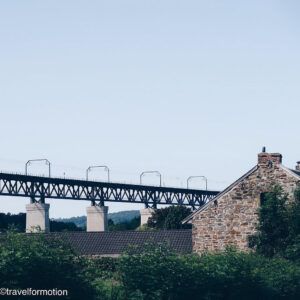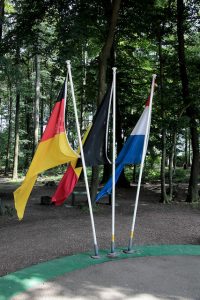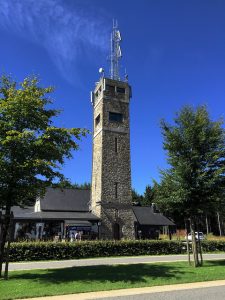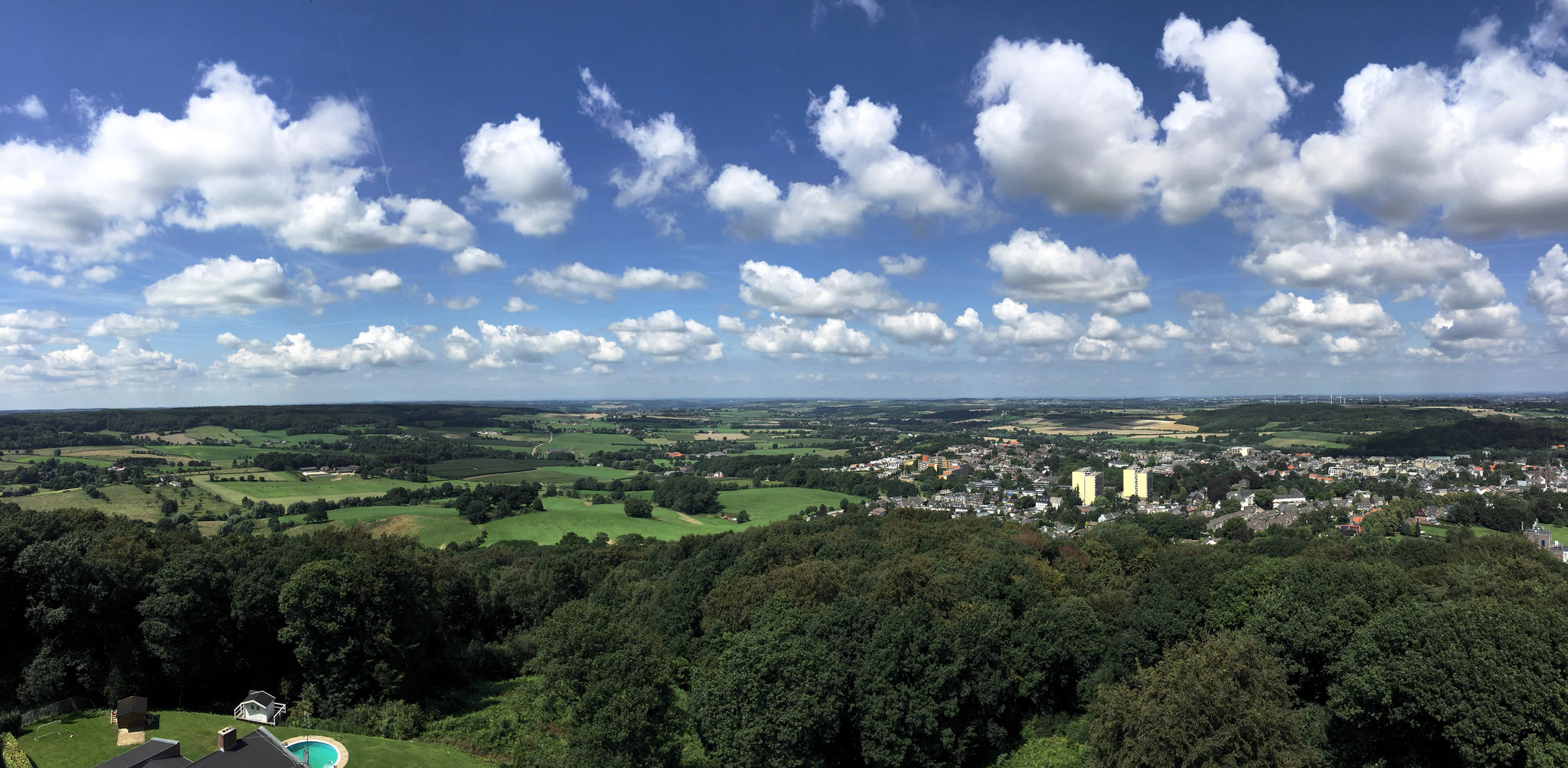We don’t really believe in bucket or other kind of lists, but we must confess: the Ardennes – Hautes Fagnes – and the border with The Netherlands and Germany are places we just had to visit a long time ago. Isn’t that the thing with travellers: going far away and knowing everything one must know about destinations far abroad, but not that much about the homecountry … Time to bring this to a change! We took of in Ghent to Liege (check previous blogpost) by train and found our car at the station to discover a new world 🙂 (btw: we are members of a car sharing programme, which  allows us to take a car about anywhere in Belgium).
allows us to take a car about anywhere in Belgium).
First stop: Plombières. A little town – as many of the towns in the Ardennes – with a rich mining history. And just a few kilometers out, we bumbed into Moresnet. Doesn’t say much to a lot of people, but this was an important place a long time ago. This village was part of Neutral-Moresnet. Neutral, as in: ‘not belonging to any specific country’. It arose after the fall of Napoleon and the creation of new borders all over Europe. Because of the important zinc industry (it’s always about money … ) the leaders at that time couldn’t come to an agreement. This small ‘country’ existed for nearly a century. Nowadays it is part of Belgium (German speaking part). Well worth a stop, just to see the overwhelming bypass!
 A little bit further we found the actual goal of this day: the point where three countries of the European Union meet each other (and in the past, it were even four countries when Neutral-Moresnet was still a country). We climbed the two towers (take your wallet, it will cost you € 3,5 and € 3 per person respectively) and got a magnificent view over the area. Strange to look around you and face Belgium, Germany or The Netherlands, depending on where you stand. The place where the borders actually touch is marked by the three flags (and a line on the ground shows you where Neutral-Moresnet was). Other interesting feature of this ‘park’ is the highest point of The Netherlands (for a country as flat as the Dutchies, for a great part laying under sea level, this is a big thing!). Yes, I said ‘park’. This place is very interesting, but unfortunately is has more of a theme park than anything else.
A little bit further we found the actual goal of this day: the point where three countries of the European Union meet each other (and in the past, it were even four countries when Neutral-Moresnet was still a country). We climbed the two towers (take your wallet, it will cost you € 3,5 and € 3 per person respectively) and got a magnificent view over the area. Strange to look around you and face Belgium, Germany or The Netherlands, depending on where you stand. The place where the borders actually touch is marked by the three flags (and a line on the ground shows you where Neutral-Moresnet was). Other interesting feature of this ‘park’ is the highest point of The Netherlands (for a country as flat as the Dutchies, for a great part laying under sea level, this is a big thing!). Yes, I said ‘park’. This place is very interesting, but unfortunately is has more of a theme park than anything else.
Day two started at the Weser damm in Eupen (Belgium). We were surprised by the gigantic wall (63 meters high) when driving down, and disappointed we found ourselves amongst dozens of triathletes… Always check beforehand if there are any events taking place where you go to. New lesson learnt. Still quite amazing to see! The damm is surrounded by one of the most important woods of Belgium, both for the wood industry and for the local fauna. We left just in time (read: before the race started) and drove on to Baraque Michel.
 This is the Hautes Fagnes for real! The roof of Belgium (550 meters high). A mezmarizing country. High and cold yes,but we had excellent weather. And although it is summer holidays, we came in early enough to enjoy a peaceful walk through the peats. The routes all start at the café, ours really began at the chapel which was build to orientate walkers. Be sure to bring enough water as well: the water at the Hautes Fagnes is extremely acid! Just 2 kilometer further we found the highest point of Belgium: 694 meters above sea level. I was here about 20 years ago, on a trip in grammar school. All
This is the Hautes Fagnes for real! The roof of Belgium (550 meters high). A mezmarizing country. High and cold yes,but we had excellent weather. And although it is summer holidays, we came in early enough to enjoy a peaceful walk through the peats. The routes all start at the café, ours really began at the chapel which was build to orientate walkers. Be sure to bring enough water as well: the water at the Hautes Fagnes is extremely acid! Just 2 kilometer further we found the highest point of Belgium: 694 meters above sea level. I was here about 20 years ago, on a trip in grammar school. All  I could remember was the big stair (Butte Baltia, named after a military man in the 18th Century, who decided he wanted some steps here).
I could remember was the big stair (Butte Baltia, named after a military man in the 18th Century, who decided he wanted some steps here).
The big stair is still in place and offers a nice view around (or just in front, behind you are pine woods. When you cross the street you can start some walks around this open country Fagnes wallonne (be carefull though: the other thing I remembered from that school trip was the warning of the guide to stay on the tracks, otherwise the swamp would eat you. And yes indeed, people have died here – mostly in winter a long time ago because they got lost.).
The last stop of our trip before returning home was another damm: the damm of Gileppe. This one provides the villages around of drinking water and was build in the 18th Century. Originally it was a bit lower than it is now, and we don’t think the tower was in place then. However, the tower is for free and offers stunning views over the damm and lake.
A nice weekend in our own country. One doesn’t always have to wander far away to experience something exciting!
